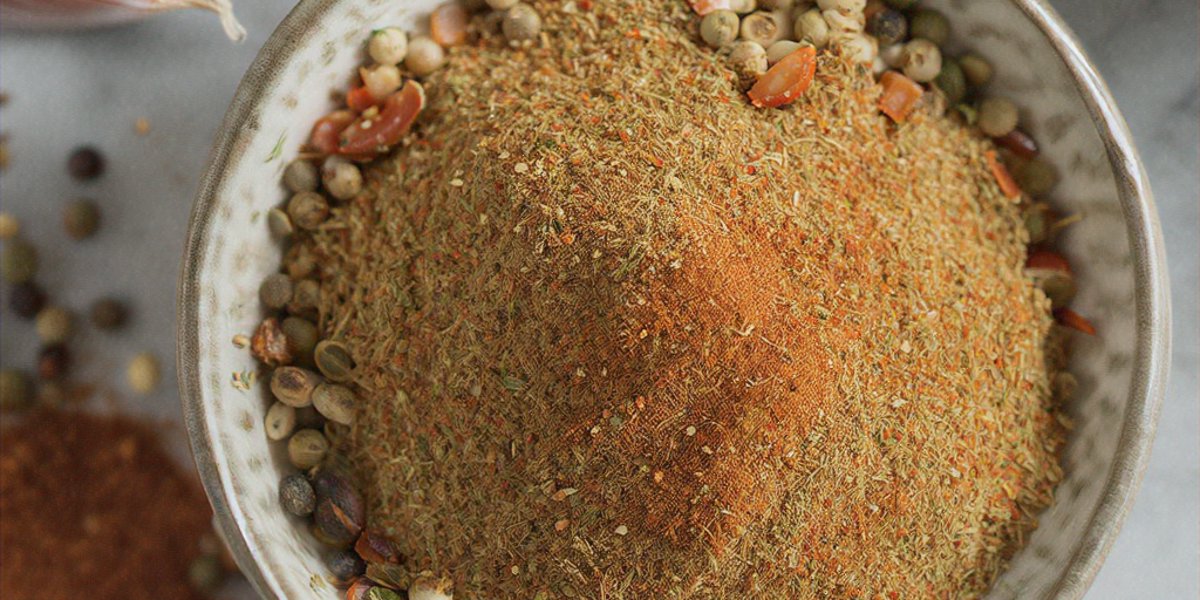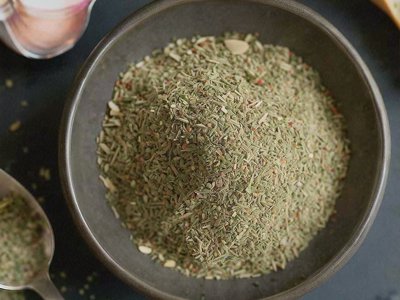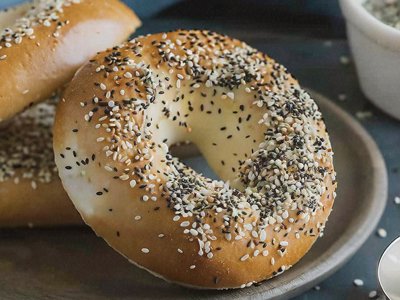Homemade Cajun Seasoning
Bring the bold, spicy flavors of Louisiana right to your kitchen with this authentic Cajun seasoning blend. Perfect for blackened fish, shrimp, chicken, and vegetables, this seasoning captures the essence of Creole and Cajun cooking with its perfect balance of heat, herbs, and aromatics.
Ingredients
- 2 tablespoons paprika
- 2 tablespoons garlic powder
- 1 tablespoon onion powder
- 1 tablespoon dried oregano
- 1 tablespoon dried thyme
- 1 tablespoon black pepper
- 1 tablespoon white pepper
- 1 tablespoon cayenne pepper
- 1 tablespoon salt
Instructions
Basic Preparation
Combine spices: Mix all ingredients together in a medium bowl, whisking until evenly distributed.
Sift if desired: For a finer texture, sift the mixture through a fine-mesh strainer.
Store properly: Transfer to an airtight container or spice jar.
Label and date: Mark your container with contents and date made.
Storage Guidelines
- Keeps fresh for 12-18 months
- Store in cool, dry place
- Away from direct sunlight
- Use glass containers for best preservation
Classic Cajun Cooking Applications
Blackened Proteins
Blackened Fish
- Prep protein: Pat fish fillets dry and coat generously with Cajun seasoning
- Heat pan: Use cast iron skillet over medium-high heat
- Cook quickly: 3-4 minutes per side until crust forms
- Best fish: Redfish, catfish, tilapia, or mahi-mahi
Blackened Chicken
- Pound thin: Flatten chicken breasts to even thickness
- Season heavily: Coat both sides with seasoning blend
- Sear hot: Cook in hot skillet until internal temp reaches 165°F
Blackened Shrimp
- Large shrimp: Use 16/20 count shrimp, peeled and deveined
- Quick coating: Toss with seasoning just before cooking
- Fast cooking: 2-3 minutes per side maximum
Traditional Cajun Dishes
Jambalaya Seasoning
- Add 2-3 tablespoons to rice dishes
- Perfect for chicken and sausage jambalaya
- Enhances seafood jambalaya
Gumbo Enhancement
- Season proteins before adding to gumbo
- Add to roux for deeper flavor
- Sprinkle on finished dish
Red Beans and Rice
- Season andouille sausage
- Add to bean cooking liquid
- Garnish finished dish
Heat Level Adjustments
Mild Version
- Reduce cayenne to 1/2 tablespoon
- Use sweet paprika instead of hot
- Increase herbs (oregano and thyme)
Extra Hot Version
- Increase cayenne to 2 tablespoons
- Add 1 tablespoon chipotle powder
- Include 1/2 tablespoon ghost pepper powder (use carefully!)
No-Salt Version
- Omit salt from blend
- Add salt separately when cooking
- Perfect for those watching sodium
Beyond Traditional Uses
Vegetables
- Roasted sweet potatoes
- Grilled corn on the cob
- Sautéed okra
- Roasted Brussels sprouts
Snacks and Sides
- Seasoned popcorn
- Cajun-spiced nuts
- French fries and potato wedges
- Corn bread batter
Marinades and Rubs
- Mix with olive oil for marinades
- Dry rub for grilled meats
- Add to butter for compound butter
- Mix into mayonnaise for sandwiches
The Science of Cajun Seasoning
Key Flavor Components
Paprika (Base)
- Provides color and mild pepper flavor
- Choose sweet or hot depending on preference
- Hungarian paprika offers best flavor
Heat Trio (Cayenne, Black, White Pepper)
- Creates complex heat profile
- Each pepper adds different type of spiciness
- White pepper adds internal heat
Aromatics (Garlic, Onion)
- Foundation flavors in Cajun cooking
- Provides savory depth
- Essential for authentic taste
Herbs (Oregano, Thyme)
- Traditional in Creole and Cajun cooking
- Adds earthy, herbal notes
- Balances the heat
Regional Variations
Creole Style
- Add 1 teaspoon dried basil
- Include 1/2 teaspoon dried marjoram
- More herb-forward flavor profile
Country Cajun
- Increase black pepper to 2 tablespoons
- Add 1 tablespoon brown sugar
- Smokier, earthier flavor
Seafood Specific
- Add 1 tablespoon Old Bay seasoning
- Include 1 teaspoon celery seed
- Perfect for Gulf Coast seafood
Cajun Culture and History
Cajun seasoning reflects the resourceful cooking of French Acadians who settled in Louisiana. They adapted their cooking to local ingredients, creating bold flavors that could enhance simple proteins and vegetables. The "Holy Trinity" of Cajun cooking (onions, celery, bell peppers) is reflected in the aromatic base of this seasoning.
Cooking Techniques
The Blackening Method
- High heat: Use cast iron for best results
- No oil needed: The seasoning creates its own crust
- Watch carefully: Can go from perfect to burnt quickly
- Ventilation: Have good air circulation
Dry Rub Application
- Apply 30 minutes before cooking for deeper flavor
- Use 1-2 tablespoons per pound of protein
- Let come to room temperature before cooking
Wet Applications
- Mix with oil or butter for marinades
- Combine with lemon juice for bright flavors
- Add to stocks and broths
Pairing Suggestions
Traditional Sides
- Dirty rice
- Red beans and rice
- Coleslaw (to cool the heat)
- Cornbread
- Mac and cheese
Beverages
- Cold beer (lagers work well)
- Sweet tea
- Lemonade
- White wine (Sauvignon Blanc)
Recipe Scaling
Large Batch (Makes 1 cup)
- 6 tablespoons paprika
- 6 tablespoons garlic powder
- 3 tablespoons each: onion powder, oregano, thyme
- 3 tablespoons each: black pepper, white pepper, cayenne
- 3 tablespoons salt
Small Test Batch
- Use 1 teaspoon of each ingredient
- Perfect for trying the blend first
Conclusion
This homemade Cajun seasoning brings authentic Louisiana flavors to your kitchen without the preservatives and excessive sodium found in many commercial blends. The balance of heat, herbs, and aromatics makes it incredibly versatile, perfect for everything from traditional blackened fish to modern applications like seasoned popcorn. Once you master this blend, you'll have the foundation for countless Cajun and Creole dishes that celebrate the bold, soulful cooking of Louisiana.



